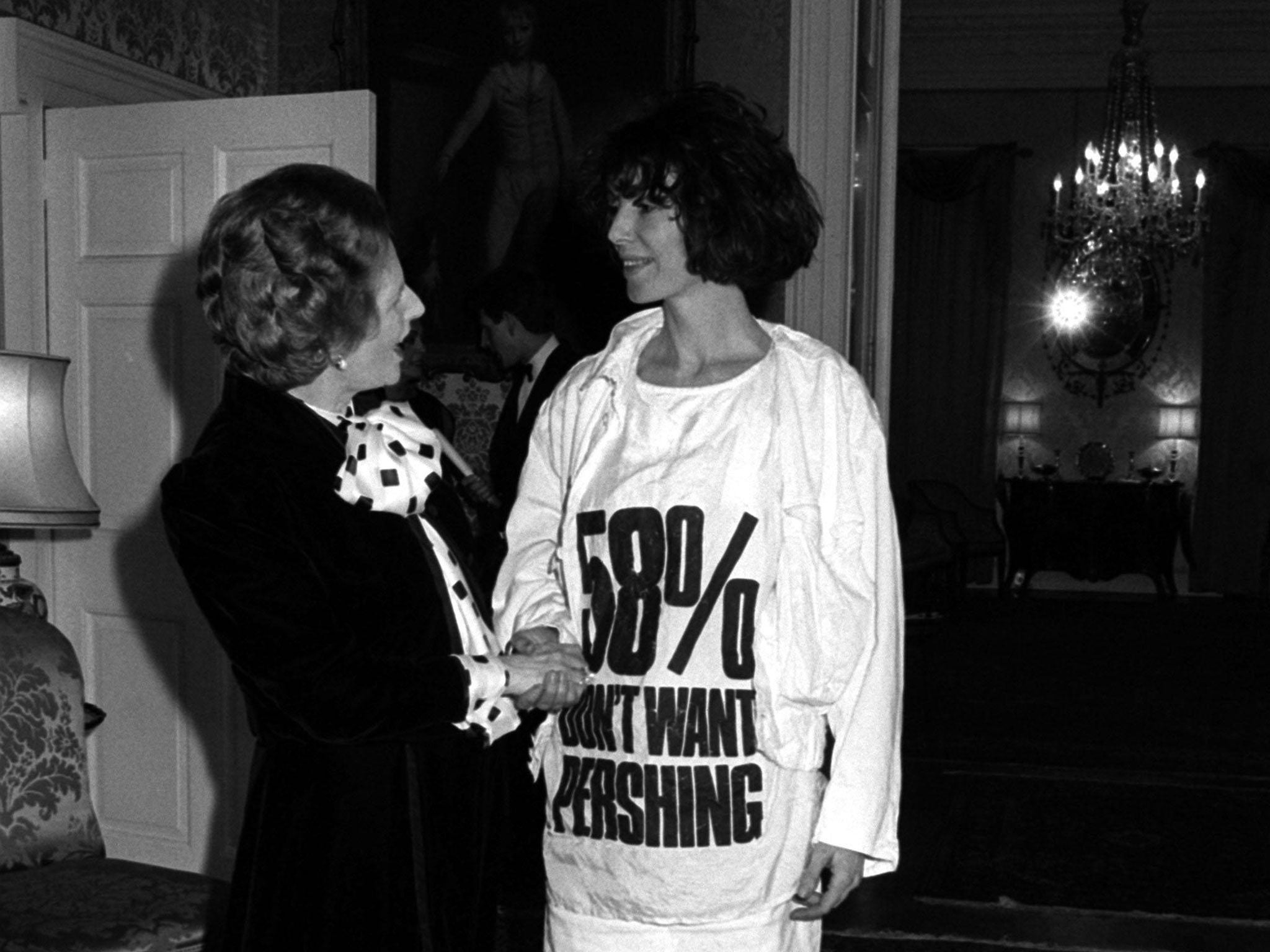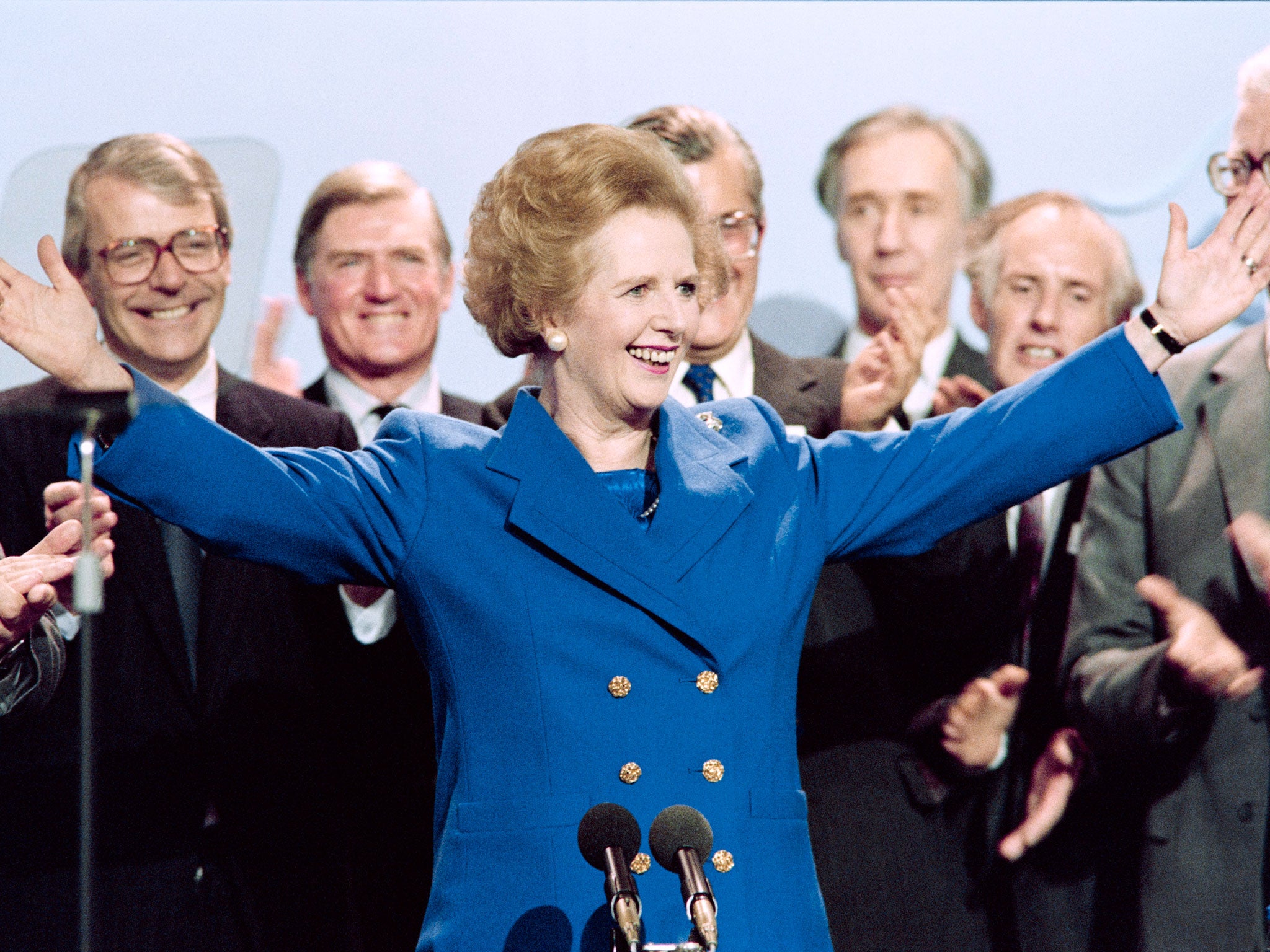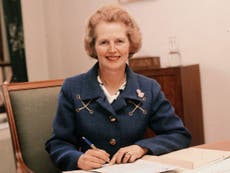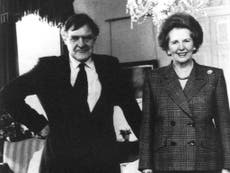The V&A Museum has 'politely declined' Margaret Thatcher's wardrobe. Quite right too
As a fashion editor, Alexander Fury has a special interest in how especially uninteresting the former Prime Minister's clothes are

This week, I've experienced somewhat mixed feelings about the late Margaret Thatcher... which is something I never thought I'd write.
Those feelings come from the news – and then news upon news – of apparently protracted talks between the Thatcher estate and the Victoria and Albert museum over the future of the past wardrobe of the late Baroness Thatcher. The V&A issued a statement confirming it had "politely declined the offer".
Reaction was, on the whole, neatly cleaved into the two clean, entirely disconnected halves of debate that Thatcher's mere name incites: conservatives, of lower and uppercase C alike, howled "sacrilege"; liberals garlanded the V&A with laurels. I'm in the latter camp when it comes to Thatcher; as a fashion editor, I also have a special interest in how especially uninteresting her clothes are... which was the Victoria and Albert museum's given reason for refusing items it described as "records of political history".
"The museum is responsible for chronicling fashionable dress," it said. "Its collecting policy tends to focus on acquiring examples of outstanding aesthetic or technical quality."
Thatcher's clothing represent neither of those, let's be honest.
I guess you could extend that argument, in some respects, to people such as Kylie Minogue and David Bowie, whose wardrobes were showcased at the museum in 2007 and 2012, respectively. Kylie's gold hotpants may not be of outstanding quality (they cost 50p, and came from a market stall), but do you remember them, or her rictus grin and bouncing Farrah Fawcett locks? In the same way, Bowie's Ziggy get-up didn't clothe the persona – it was the persona.
Mrs Thatcher's wardrobe is a different deal altogether. You remember not her mid-Eighties power suits (which weren't all that powerful, really, next to the boulder-shoulder stuff being shown by Claude Montana and Thierry Mugler at the same time), but the woman above them, her aureole of reddish hair, the high forehead, the small eyes and narrow lips and commanding nose so easily rubberised by Spitting Image. Divorced from her commanding presence, on the whole, they're impotent relics.
Does that make them worthless? No. I wouldn't say Marilyn Monroe's pleated, halter-necked and famously fluttery Seven Year Itch dress was especially interesting without Norma Jean inside, but I'm sure the V&A wouldn't say no to it (it wound up making £3.6m at auction in 2011, incidentally). And there are certain pieces from Thatcher's sartorial past that would make compelling displays – about politics, sure, but also about fashion. Imagine directly contrasting the notorious "58% don't want Pershing" T-shirt sported by Katharine Hamnett to Downing Street in 1984 with Thatcher's choice, on the same night, of prissy, floor-skimming velvet suit and polka-dot blouse – radical politics meets staunch Conservatism, expressed solely through dress. The impact won't have lessened over the years, or by removing the clothes from the womens' bodies. That contrast speaks about the power of dress, and about the ability of contemporary women especially to semaphore messages (subtle or otherwise) using the clothing on their backs. It talks about the power of fashion as a tool to provoke debate. And, besides, surely recreating a historical moment in the confines of a museum vitrine should be a curatorial dream?

Nevertheless, I agree with the decision to turn down Thatcher's wardrobe – for numerous reasons. Firstly, because the V&A wasn't being offered single garments, such as that velvet suit, nor a clutch of Thatcher's symbolically-loaded handbags, but the lock, stock and barrel of her clothing. This poses boring issues of proper storage and space: should Thatcher's dirty laundry take up accessions that could otherwise be devoted to contemporary fashion's finest? I don't think so.
There's also the issue of the institution itself – its very survival, which Thatcher threatened. The V&A was one of the museums to write to Thatcher in 1990, bemoaning its financial plight following Thatcherite cuts. Government expenditure on museums rose just 1 per cent per annum through the mid-Eighties; many resorted to charging admission, and attendance dropped by up to 55 per cent. In an eerie echo of that past, "senior Conservatives" have passed snide remarks on museum spending reviews in the wake of the furore.
But the V&A was correct, I feel, in politely declining these clothes. Because they are clothes, not fashion. Where would a red ministerial dispatch box sit, after all, in a museum devoted to "[enriching] people's lives and inspire individuals and everyone in the creative industries, through the promotion of knowledge, understanding and enjoyment of the designed world"? Next to the handbags?
Ultimately, the refusal of Thatcher's clothes was a political, not an aesthetic decision. Right it was, too, in every way. Except "wing".






Join our commenting forum
Join thought-provoking conversations, follow other Independent readers and see their replies